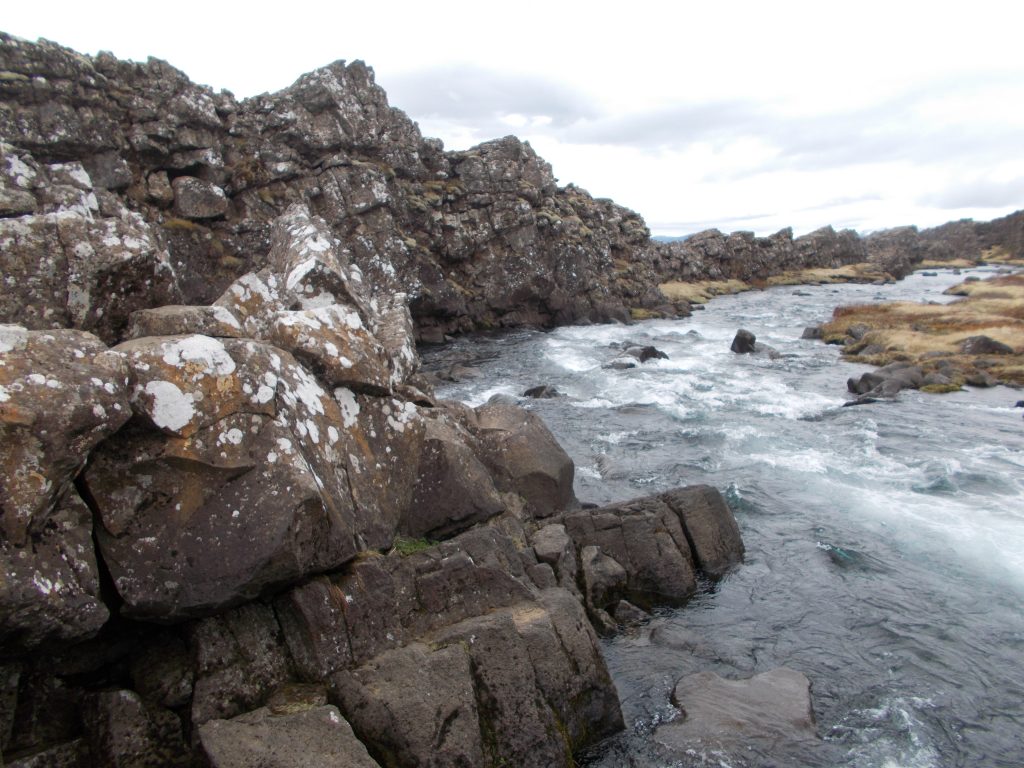Diane’s Newsletter 20th November 2018
 The letter I is the ninth letter of the English alphabet, and according to numerology it indicates selflessness and generosity. People whose names begin with I are often idealistic, generous, sympathetic, creative and intense, with very deep feelings.
The letter I is the ninth letter of the English alphabet, and according to numerology it indicates selflessness and generosity. People whose names begin with I are often idealistic, generous, sympathetic, creative and intense, with very deep feelings.
As a letter it was used interchangeably with J until around the sixteenth century. The dot over the lower-case variant is known as a tittle (a kind of diacritic). The difference between the diacritic and the tittle is that the diacritic indicates pronunciation or stress while the tittle is simply a small, insignificant mark that does nothing in particular but is still part of the letter.
I is not only a letter it is also a word in English – the first person singular pronoun – and from this point view it may be interesting to consider some of the attributes listed above. Perhaps generous and sympathetic should describe all of us (at least, as long as we speak English. . .).
For those who may be interested, the colours connected to I are all colours.
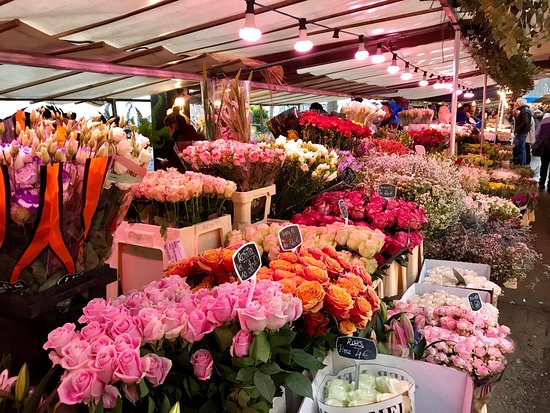
Hon var en svensk kvinna och hon var född till dvärg.
För det mesta satt hon hemma i sitt kalla land, i sin lilla lägenhet och läste böcker. En gång fick hon tag i en skildring av Paris. Vilken stad! Ett längtans frö smög sig in i hennes hjärta, grodde och blev allt större. Så stor, att hon tog mod till sig, lämnade det lilla, säkra hemmet och reste till denna kärlekens stad.
Begeistrat sökte hon upp de ställen hon hade läst om i boken. Men ack – så lite hennes ögon nådde. Precis som ett barn hade också hon ett väldigt begränsat synfält, om hon inte kunde ställa sig på stolar eller pallar. Hon hade hört, att det fanns hallar vid floden Seine, fylld av de vackraste blommor. Tusentals olika exemplar. Dit ville hon gå.
Det fanns mycket folk där, när hon kom in. Hon såg bara byxben och kjolar, handväskor som sladdrade kring hennes öron och handskar som snodde vid hennes lilla ansikte. Besvikelsens och maktlöshetens tårar brände bakom hennes ögonlock, trängde fram och rullade nedför hennes runda kinder. Hon ville vända om för att smita ur benlabyrinten. Då hörde hon ovanför sig en mörk, sjungande röst lugnt men bestämt säga: ” Attention, mes dames, messieurs: Allez à coté ! ”

Två kraftiga, mörka armar dök upp och banade väg. De tillhörde en färgad man, som tycktes från hennes nivå sett, lång som ett träd. Framför den lilla damen bildades en smal gata. Mannen böjde sig ner till henne och sa vänligt: ” Passez mademoiselle, s´il vouz plait. ”
Hon ilade, så fort hennes små fötter bar henne. Medan hon med sin klockstämma trallade: ” merci, merci beaucoup, ” torkade hon bort tårarna. Nu såg hon blommorna, hon kände deras doft också. Upphetsad ställde hon sig på tårna. Hon ville skåda alla. Här fanns de framför henne, sammetslikt och skimrande, som en enda stor orientaliskt matta. Men – hon var för liten för att se hela konstverket. Igen hörde hon den mjuka rösten bakom sig: ” Pardon, mademoiselle! ”
Den långe, mörke mannen tog försiktigt om hennes midja och lyfte upp henne, högt upp. Då såg hon alla de underbara färger och hon njöt. Mannen hade järnarmar som inte ville bli trötta. Hon fick titta länge. Efter en stund ställde han henne varsamt på marken, tog hennes hand och skred tigande mot de bakomstående människorna. Återigen öppnades en smal gata för dem. Vidare gick han nerför vägen, alltjämt med hennes lilla hand i sin jättenäve. Vid ett gatucafé tvekade han och blickade sökande omkring sig. Ivrigt bad hon honom att få bjuda på en flaska vin och bröd. Han log och nickade.
De slog sig ner vid ett vitt, runt bord. Först nu, när han satt mittemot henne, kunde hon betrakta hans ansikte. Hennes ögon lyste lyckligt, medan hon talade till honom. Visst hade hon fått se blommorna i hallarna i Paris. Hon älskade blommor. Men denne man hade visat henne mer. Han hade gett henne den finaste, vackraste blomman som fanns: Vänskap, ömhet för den svage. Detta gav henne värdighet. Aldrig skulle hon glömma honom.
Solen blänkte till i det gyllene vinet, i hans lite sorgsna ögon och i kärlekens stad.
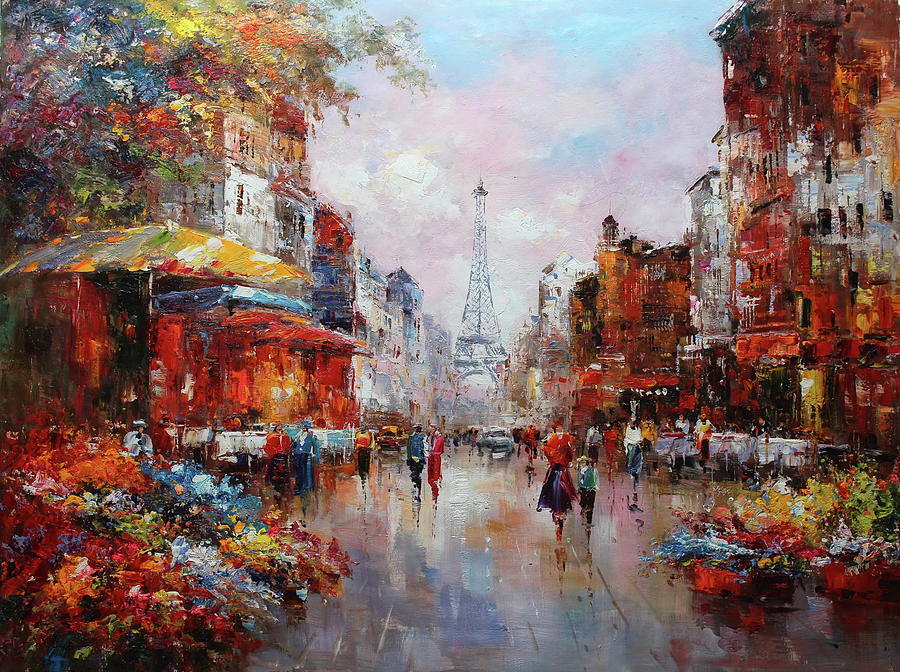
Bilderna: TripAdvisor och Charlotte Hoather. Målningen: Luigi Paulini
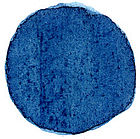 When I began thinking about topics that fitted in with this month’s Newsletter, the word Indigo kept jumping up and down, wanting me to include it. Everyone knows that indigo is a colour, and I could not see any reason to include it, but it eventually got the better of me.
When I began thinking about topics that fitted in with this month’s Newsletter, the word Indigo kept jumping up and down, wanting me to include it. Everyone knows that indigo is a colour, and I could not see any reason to include it, but it eventually got the better of me.When we think of indigo we usually think of a colour somewhere between blue and violet, yet the indigo plant from which natural indigo dye is sourced is actually blue (think of jeans and other cottons). The plant – indigofera tictoria – is a bush that grows in Asia and Africa and can reach heights of two metres. The flowers are pink, which might be a little surprising, but the dye itself does not come from the flowers but from fermenting the leaves. Nowadays the natural dye has been mostly replaced by synthetic dyes. In 2011, 50,000 tons of synthetic indigo dye were produced worldwide.

One of the oldest dyes, it was used for thousands of years in South America, Asia (India and Japan), Africa, and parts of the Middle East. It was India that began to supply Europe with the dye way back in ancient times, which led to the Greeks calling it indikón – Indian dye. This was later latinized to indicum and finally anglicized to indigo (late thirteenth century). Once the dye reached Europe it was considered a luxury item.
It is said that ripe bananas glow indigo under a black light and that certain insects, bats and birds, able to see into the ultraviolet, can use this phenomenon to know when to eat the bananas.
Indigo is considered to be a spiritual colour
The image of the indigo plant is from etsy.com
 There are not many hikes that start with I, but perhaps that does not really matter when there is the Inca Trail. The trail, in Peru, is around 88 kilometres (but can be shorter) and most hikers take about 5 days to complete the walk. I say ‘walk’, but my understanding is that there is a lot of serious climbing – although the trail starts at around 3,000 metres, the highest point is 4,200 metres and, besides sore legs, some hikers also suffer from altitude sickness.
There are not many hikes that start with I, but perhaps that does not really matter when there is the Inca Trail. The trail, in Peru, is around 88 kilometres (but can be shorter) and most hikers take about 5 days to complete the walk. I say ‘walk’, but my understanding is that there is a lot of serious climbing – although the trail starts at around 3,000 metres, the highest point is 4,200 metres and, besides sore legs, some hikers also suffer from altitude sickness.
Despite these slight drawbacks, the trail runs through some amazing scenery – mountains, cloud forests, valleys, Inca ruins, lakes, rivers and man-made staircases and even a tunnel. Because of the scenery and the challenges it is a very popular walk, and, over the past decades, the number of hikers using the trail began to cause a lot of environmental damage. Some camping areas have now been closed because of the damage caused.
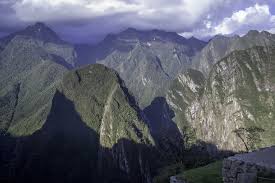
At the turn of the century the Peruvian government brought in a quota system whereby ‘only’ 500 people are allowed on the trail each day. The 500 includes 200 actual hikers plus guides and porters. Every hiker must be accompanied by a guide. Permits are issued in January each year and it is a case of ‘first in, first served’. The trail is closed every February for cleaning.

I feel that it would have been wonderful to have hiked this trail before it became popular, but I suppose that that is a case with many popular walks – once something is no longer a secret, everyone wants to be part of it.

For anyone interested in learning more about the trail, click here.
Images from wikipedia and pixabay

She was Swedish, and she was also a dwarf. Most of the time she sat at home in her cold country, in a tiny flat, and read books. Once, she read a book about Paris. What a city! she thought, and a seed of longing crept into her heart, germinated and grew. It became so big that she took courage, left her tiny, secure home and travelled to the city of love.
Enthusiastically she searched for the places she had read about in her book. But, alas, her eyes could not see very far. Like a child, her field of vision was limited unless she could stand on a chair or a stool. But she had heard that there were markets along the river Seine that were filled with the most beautiful flowers – thousands of different kinds – and she decided to go there.
When she arrived, there were many people in the pavilion, but she was only able to see trouser legs and skirts, handbags that chatted around her ears and gloves that swiped against her face. Tears of disappointment and helplessness built up behind her eyelids, then welled over and rolled down her round cheeks.
She wanted to turn around and escape from the labyrinth of legs, when suddenly, from somewhere above her, she heard a deep, lilting voice say, calmly but firmly:
“Attention, mes dames, messieurs: Allez à coté!”

Two strong, dark arms appeared and cleared a path. They belonged to a coloured man who, from her perspective, seemed as tall as a tree. As a narrow path opened up in front of her, the man bent down and said in a friendly voice: “Passez mademoiselle, s´il vouz plait.”
She hurried, as quickly as her small feet could carry her, and while she sang in her bell-like voice, “Merci, merci beaucoup,” she dried her eyes. Now she could actually see the flowers; she could even smell their perfume. Excited she stood on her toes. She wanted to see everything. The flowers were in front of her, luxurious and resplendent like one enormous Oriental rug. But she was too little to see the whole work of art. Then once again, she heard the gentle voice behind her: “Pardon, mademoiselle!”
The tall, dark man carefully put his hands around her waist and lifted her up. Now she could see all the wonderful colours, and she was filled with delight. The man had arms of iron and did not seem to tire, and she was able to look around her for a long time. Eventually the man lifted her carefully back down to the ground, took her by the hand and strode silently towards the people behind them. Once again a narrow path opened for them, and he continued towards the street still holding her little hand in his very large hand. When they reached a street café he stopped for a moment and looked around him.
Eagerly she asked if she could invite him to share a bottle of wine and some bread. He smiled and nodded, and they sat down at one of the round, white tables. It was only now, when he was seated opposite her, that she was able to see his face. Her eyes shone with happiness while she spoke to him.
It was true that she had seen the flowers in the Paris market, and she loved flowers, but this man had shown her much more. He had given her the finest, most beautiful flower of all – friendship and tenderness for those weaker than himself. This gave her dignity. She knew that she would never forget him.
The sun glistened on the golden wine and the man’s melancholy eyes in the city of love.

Images from TripAdvisor and Charlotte Hoather. Market Painting by Luigi Paulini

The ‘Indian’ refers to the mango and the yoghurt, but it is not really an Indian Ice Cream recipe. The first time I made it I followed an Indian recipe (using mangoes, mango juice, yoghurt and no sugar). Although the resulting ice cream tasted great it tended to freeze to the consistency of granite after a day in the freezer. After a bit of research I discovered that sugar, alcohol and fat do not freeze, so I set about devising my own recipe. I hope you enjoy it.
Ingredients
1/2 cup ripe mango chunks (1 medium mango)
2 bananas
1 small tin coconut cream (270 g)
1 cup plain yoghurt
1/2 cup sugar
1 tspn fresh lemon juice
Pinch ground cinnamon or cardamom
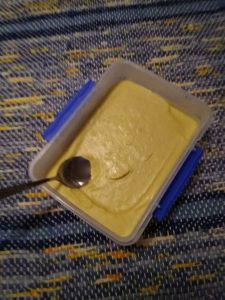
Directions
Place the mango chunks, bananas, yoghurt, lemon juice, cinnamon (or cardamom) and coconut cream into a food processor or mixer and process until smooth and well combined. Transfer the mixture into the frozen insert of a commercial ice cream maker (if you are lucky enough to own one) and churn according to manufacturer’s instructions, OR, alternately, put the mixture into an airtight container and freeze for several hours until ‘set’. Serve the ice cream in small bowls, garnished (if you so wish) with diced mango, strawberries, chopped bananas and/or nuts.
An amazing present for yourself or for someone else, each of these four prints are completely unique.
I took the photographs on Iceland in 2017 and had them placed on canvas professionally. The company, Brilliant Prints, introduces itself with the following philosophy:
Every day we are bombarded with low quality, low-cost products that break down after a few months. We had a washing machine that lasted 24 years without a hiccup. The latest one we have bought has already broken down 6 times in 3 years.
We also live in the time of the digital camera, when almost no-one prints copies of their photos. In generations to come, the pleasure of pouring over photos of families and times gone past will be lost.
Good old fashion service has been replaced by phone queues, companies that restrict their staff’s authority so much that you can never get a problem resolved, and organizations who make everything so complicated that even the most basic interaction becomes a nightmare.
This is why I started BrilliantPrints. I wanted to demonstrate that it was possible to create a company that produced a quality product, at a competitive price and made the process as fun and easy as possible. Our product lasts 75+ years and will be enjoyed by generations to come. You will simply not find a better gift idea that is so personalized, yet so long-lasting.
The above extract should give you some idea of the work ethic on which the company is based. From my own experience, their work is perfection on all levels.
Each print measures 30×40 cm and is beautifully finished. For only AUD 130 (plus postage) any one of the prints can be yours. Please contact me with your choice and, depending on where you live, I will advise you of the postage costs (if any). If you are interested, don’t delay – there are only four prints remaining.


